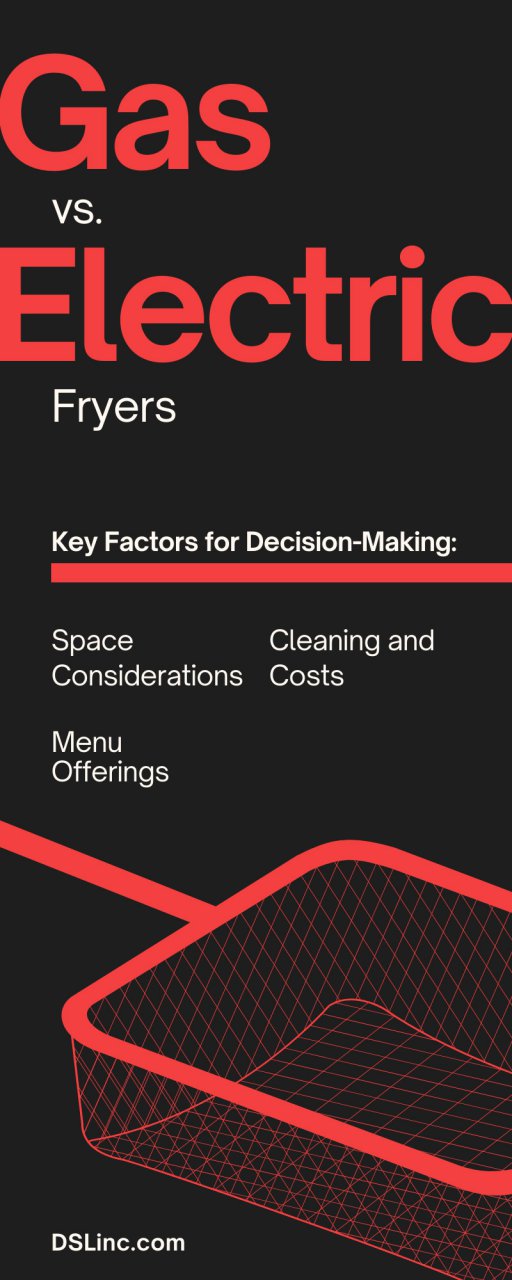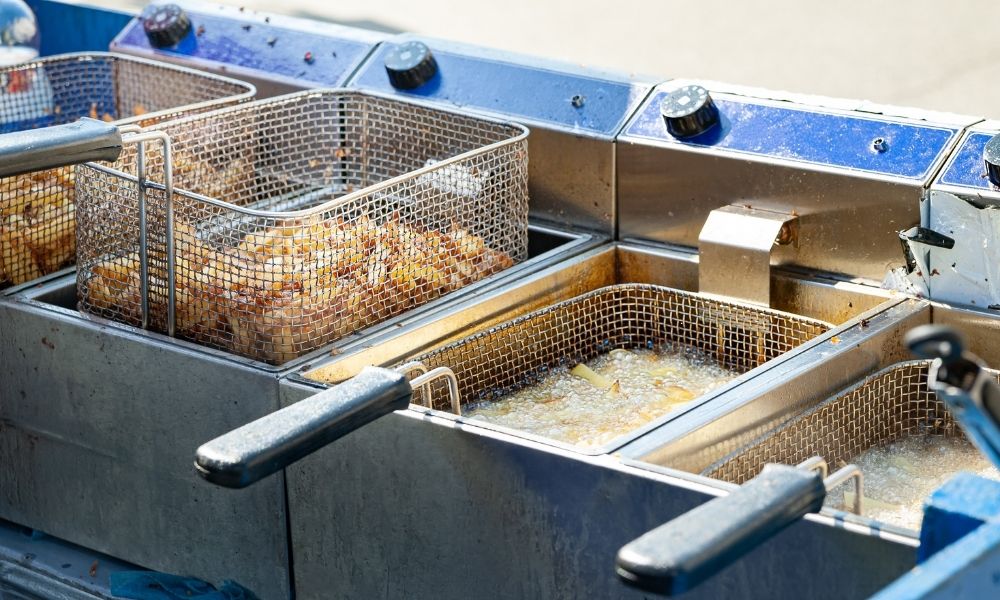Gas vs. Electric Fryers! Chicken tenders, mozzarella sticks, and French fries—oh my. Everyone in the world has a favorite fried treat they can’t deny. Frying is undoubtedly one of the most popular cooking techniques out there. This holds especially true in commercial establishments and their back-of-house kitchens. Who can resist the satisfying crunch and iconic taste of these fried foods from time to time? Yes, these mouthwatering nibbles certainly remain near and dear to many people’s hearts.
As a keystone piece of equipment, commercial fryers are major investment appliances for foodservice businesses. That said, a wide array of fryers are on the current market. Two specific varieties reign over the rest: the commercial gas deep fryer and the commercial electric fryer. Each can handle the tasks of everyday frying to serve customers, but their features and cooking processes greatly differ when push comes to shove.
Never fear—we’ve compiled a general guide to help you find the perfect frying unit to cook up appetizers, main entrees, and even the sweetest desserts. Let’s break down the debate between gas vs. electric fryers: the right one for your business. Here’s what you need to know.
Key Factors for Decision Making-Gas vs. Electric Fryers
When comparing gas vs. electric fryers to decide the right one for your business, keep several key factors in mind. Both have advantages and disadvantages for your commercial kitchen. Which one will most positively impact your day-to-day operations?
Menu Offerings-Gas vs. Electric Fryers
Not all food service operations are alike. Think over what types of food your business will fry. Donuts? Churros? Fries? Chicken? Fish? Will you need a sediment tray for better filtering?
Space Considerations-Gas vs. Electric Fryers
In either gas-powered or electric-powered fryer options, you can choose between the countertop or floor designs. Countertop fryers are smart choices for smaller businesses to save space while maintaining top performance efficiency. On the other hand, floor fryers are reasonable for high-volume kitchen operations. If your business sells larger quantities, meeting your customer demands with floor fryers is a breeze. Reliability and consistency are key either way.
Cleaning and Costs-Gas vs. Electric Fryers
Think over the varying costs at play. No business desires to waste time or money. Each model or frying style differs in some shape or form. Consider if you’d rather spend less time cleaning throughout the week. Or would you rather choose a more economical option that requires regular maintenance?
Gas Fryers: Benefits and Drawbacks-Gas vs. Electric Fryers
Traditionally, a commercial deep fryer is an appliance with a clever design. This appliance makes heating larger quantities of cooking oil possible. Otherwise, deep frying large quantities of food would be a hassle. The cooking process is relatively basic, but the form is most important for your businesses’ goals and appliances.
Long story short: your choice of a utility power source matters. Let’s focus on gas-powered fryers first. Gas fryers use natural gas lines from a building or propane tanks to operate. A leading perk of a gas-powered deep fryer over its electric counterpart is a faster heating-up time. Depending on their design style, these fryers have heating elements that sit in or out of the frying pot. You can purchase a gas fryer that’s either a tube, flat bottom, or open pot. This choice mainly depends on your kitchen offerings and space.
The Different Gas Fryer Styles-Gas vs. Electric Fryers
A tube-type fryer is ideal for breaded foods that produce high amounts of sediment, such as onion rings, chicken, or fish. These are typically items fried in a basket. Their design features a sediment “cold zone” beneath the tubes, where extra food particles collect for later removal. This option is extremely versatile. However, tube fryers are more difficult to clean compared to flat or open fry pots.
Flat bottom fryers solely use gas for power, as they receive heat from below. You would choose this style of fryers for food items that float close to the top of the oil, such as battered desserts, funnel cakes, or donuts. These fryers do not contain a sediment zone and collect the extra crumbs and particles at the bottom of the appliance. Hence, flat-bottom fryers regularly require cleaning.
Open pot fryers of the gas-heated variety use a gas burner to heat the oil. This style has a sediment zone for food particles to escape the hot cooking oil. Because the zone is open and easily accessible, cleaning is typically less difficult. Open pot styles can also handle greater food quantities depending on a specific model’s capacity. Commercial kitchens generally can’t go wrong with this affordable option.
Electric Fryers: Benefits and Drawbacks-Gas vs. Electric Fryers
Natural gas may be the most common fuel source in restaurants and eateries, but it’s considerably less versatile in comparison. Gas-heated fryers are not the easiest to install, and you cannot move them around with ease, either. Since electric fry pots are not tied directly to gas lines, businesses that use electric deep fryers have the extra benefit of mobility. Electric units are portable with their plug-in-and-go options—and more cost-effective on one’s utility bills.
The Main Style of Electric Fryers-Gas vs. Electric Fryers
On the flip side, electric models outperform gas units because their heating element sits submerged in the oil. For this reason, electric-heated fryers are known for their heat efficiency and faster temperature recovery between batches. This quicker response and turnaround time gives businesses the valuable ability to cook more items in rapid succession.
You’ll tend to find that electric fryer styles are akin to an open pot. Instead of an external gas burner, the electric heating coils are either in the oil or wrapped directly around the tank. Their boosted energy efficiency is crystal clear for greener business practices.
We completed the differences between Gas vs. Electric Fryers. All in all, your choice is mainly economical. The operational differences are easy to identify but are relatively minimal in scale. There’s no need to complicate the decision. Consider your location and if gas or electricity is more cost-effective for your foodservice operations. In common cases, the decision is already made for you by your building. Then, you only need to decide on size, style, and capacity.
Henny Penny: Model-Specific Features
DSL is here to serve you with innovative foodservice equipment and solutions. If you’re shopping around for an open pot fryer for your commercial kitchen, you’re in luck. We’re a supplier of Henny Penny 340 series high-capacity open fryers compatible with electricity or gas. These models offer top-quality features, making them superior choices for restaurants, foodservice operations, or convenience stores.
Browse the specific product specifications listed on our site, or reach out for a quote today. Let’s get those funnel cakes and French fries frying and cash constantly flowing.

